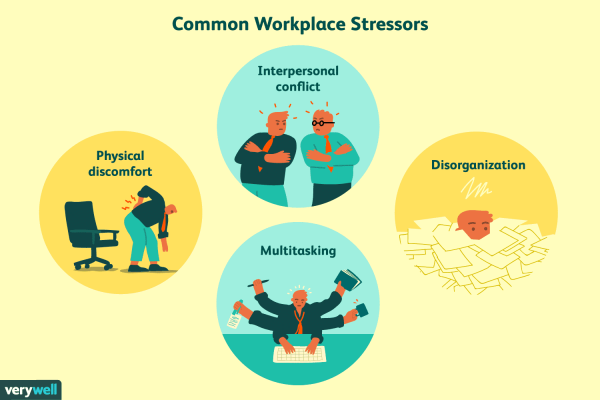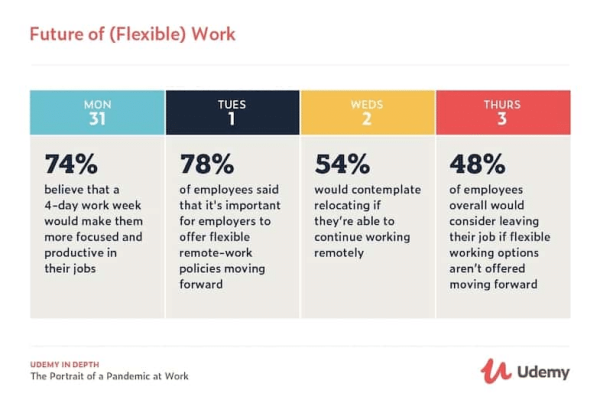As offices reopen and employees return to work, many will find it difficult to manage the transition from remote to on-site work. Find out how health and wellness programs can help your workforce.
Businesses are eager to welcome employees back to the office, and many have implemented measures to make the transition easier for employees. It’s not an easy task, however. The pandemic has had a massive impact on our collective mental health, with many reporting new mental illnesses or exacerbated symptoms for those with existing conditions. Employees who have suffered from or are suffering from mental health issues might find managing the change more difficult than their colleagues.
It’s impossible to completely remove all the stressors, but there are steps employers can take to make the transition smoother. Let’s get into how companies can make the transition less painful for their most vulnerable employees.
Manage Expectations
Managers and HR teams can work together to put a communication plan in place. The earlier you can tell employees what will happen, the better.
Alongside being transparent and proactive, employers should take steps to make information widely available in a range of formats. Team meetings via video conferencing, group emails, and automatic notifications on a company chat app are all good options.
It’s just as important to be honest about what you don’t know. Doing so may feel overwhelming, but allowing employees to feel part of the process can smoothen out the path ahead.
Recognize Common Workplace Stressors and Minimize Them
Research has shown that stress is rising among U.S. workforces. According to The American Institute of Stress, 80% of workers feel stress on the job, nearly half say they need help in learning how to manage stress, and 42% say their coworkers need such help. Another survey by The American Psychological Association reports that the majority of adults (80%) cite the coronavirus pandemic as a significant source of stress in their lives. These two figures combined mean it’s highly likely that most—if not all—of your workforce will be affected by stress. So what can you do?
First, get to know common causes of stress on a typical day—and take steps to minimize them. This could range from making sure employee workloads are manageable to investing in telehealth and telemedicine services so employees can look after their mental and physical health without having to physically visit a doctor’s office. Telehealth services such as Textcoach offer personalized exchange of text messages, voicenotes, videos and other resources to boost emotional health and well-being.

Be Flexible and Understanding When Dealing with Employees
Different employees will have different needs at different times. The more flexible you can be, the better.
A study by Udemy revealed that the majority (72%) worry the reality of the pandemic will have a long-lasting negative effect on their quality of life and dramatically diminish their prospects. This has given rise to stress both in and out of the workplace.
“The findings of this study reveal a fragile workforce where everyone is fighting new battles and leaders must embrace a culture of empathy,” said Cara Brennan Allamano, Senior Vice President of People, Places, and Learning at Udemy. “We’re living through a time of intense and profound transitions. Organizational leaders should work to be agile in navigating successfully through these changes while also being open and honest with their employees about the challenges they encounter. With no formal divide between home and work, leaders should also be thinking about what additional support they can give employees to help them better adjust to this new way of work.”
One way employers can help their employees is by offering flexible working hours. Those who are struggling with a full return to normal working patterns can instead choose whether to work from home, return to the office—or do a combination of both.

Be Patient
People are going through a lot. Whether they show it or not, it’s up to employers to be empathetic. If an employee’s behavior seems odd, be patient—and consider reaching out to them privately to offer help.
“For many, burnout and return to office anxiety is a result of the lack of family support during the pandemic. For example, many employers have had to help children with Zoom lessons or assist elderly parents who usually do not need hands-on assistance. With this in mind, employers should be flexible in when and how work gets done – even when back in-office – and encourage team members to take advantage of PTO. Try making mindfulness a key pillar of workplace culture to ease employees’ stressors. In certain instances, as a cost-saving measure, companies might consider reducing work weeks which may help employees find balance,” says Vanessa Matsis-McCready, Associate General Counsel and Director of Human Resources for Engage PEO.
Be on the Lookout for Warning Signs
Stress appears in all shapes and forms. As an employer, it’s better to assume everyone is struggling at least a little, and take steps to help workers manage their stress.
Be on the lookout for subtle signs someone isn’t coping. Leaders should keep a sharp eye out for any change in behavior from the norm, both in verbal and non-verbal communication. Being able to do this successfully could be the difference between a happy, healthy individual who feels supported—and a potentially serious problem.
As the effects of the pandemic on mental health become more evident, wellness programs that address coaching, counseling, addiction recovery, and telemedicine services can play a big role in helping employees proactively take care of their well-being.
“We recommend offering employee assistance programs and being proactive about communicating these offerings to team members. Employers should build in extra time for team events and activities that may assist with the transition back into the office environment,” says Vanessa Matsis-McCready.
Final Thoughts
The pandemic acted as a catalyst for companies to embrace and expand workplace support for emotional and mental issues. As the world recovers from the effects of COVID-19, business leaders must continue their effort to change toxic workplace practices, boost coverage for employees with mental wellness issues, and offer personalized support to each individual.
If you would like to protect the emotional well-being of your employees through robust and comprehensive health and wellness programs, contact us today. We would be happy to connect you with representatives who can help.
About CoreHealth Technologies
CoreHealth Technologies Inc. is a total well-being technology company trusted by global providers to power their health and wellness programs. Our wellness portals help maximize health, engagement, and productivity for 3+ million employees worldwide. We believe people are the driving force of organizations and supporting them to make behavior changes to improve employee health is in everyone’s best interest. With the most flexibility, customizations, and integrations of any software in its class, CoreHealth’s all-in-one wellness platform helps grow great wellness companies. Simple to sophisticated, based on you. For more information, visit the CoreHealth website.